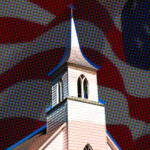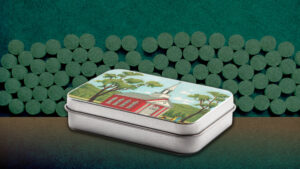Earlier this week, Israeli archaeologists announced the discovery of dozens of Dead Sea Scroll fragments bearing biblical texts. The fragments of parchment include lines of Greek text from the books of Zechariah and Nahum. Based on the writing style, they have been dated to around the first century AD. They are the first new scrolls found in archaeological excavations in the desert south of Jerusalem in 60 years.
Here are nine things you should know about the greatest manuscript discovery of modern times.
1. The Dead Sea Scrolls are biblical, apocryphal, and sectarian works.
The Dead Sea Scrolls are ancient manuscripts discovered between 1947 and 1956. Archeologists found about 950 different manuscripts of various lengths, mostly in fragments, though some were intact. The manuscripts have been classified into three main categories: biblical, apocryphal, and sectarian. The apocryphal books include such works as Tobit, Judith, the Book of Jubilees, and the Fourth Book of Ezra. The sectarian scrolls included interpretations of Pentateuch laws, various biblical stories, and the Prophets.
2. The first scrolls were found in a cave by teenage shepherds.
The documents that have become known as the Dead Sea Scrolls were found in 11 caves along the northwest shore. The location is 13 miles east of Jerusalem and 1,300 feet below sea level. In late 1946 or early 1947, a Bedouin teenage shepherd was tending his goats and sheep when he stumbled upon an opening on the side of a cliff. He and a friend later entered the cave and found a collection of large clay jars, some of which contained leather and papyrus scrolls.
3. Most Old Testament books are present in the scrolls.
More than 230 manuscripts in the collection are “biblical scrolls,” copies of works that are now part of the Old Testament. The scrolls contain partial or complete copies of every book in the Hebrew Bible except the book of Esther. Many of the biblical manuscripts closely resemble the Masoretic Text, which was used for many English translations, such as the KJV, ESV, and NIV.
4. The collection includes the oldest intact Old Testament manuscripts.
The Great Isaiah Scroll is one of the original seven Dead Sea Scrolls discovered in Qumran in 1947. It is one of the largest (24 feet long) and best preserved of all the biblical scrolls, and the only one that contains the entire text. The scroll is written on 17 sheets of parchment and includes all 66 chapters of the Hebrew version of Isaiah. Dating from ca. 125 BC, it is 1,000 years older than the previously oldest manuscripts of the Hebrew Bible found in modern times.
5. Most of the scrolls are about 2,000 years old.
The majority of the Dead Sea Scrolls were written between the second century BC and second century AD. Jewish scholar Frank Moore Cross and archaeologist Nahman Avigad concluded that the scroll fragments were written between 225 BC and AD 50. Carbon dating estimated that an animal skin from the scrolls was from around the same period, and bronze coins found around the caves appear to span from 135 BC to AD 73. These are the oldest known copies of biblical works.
6. The scrolls are in several languages.
Most of scrolls are in Hebrew using the standard “square” (“Jewish”) script, that is similar to today’s Modern Hebrew. Several are written in paleo-Hebrew, an ancient script from the First Temple period. The collection also includes many Aramaic and Greek texts, as well as some Arabic texts and a small number of Latin fragments.
7. The collection includes tiny parchments worn as Tefillin.
The scrolls include entire manuscripts of books found in the Bible, as well as ritual objects used with Tefillin or “phylacteries” (small black-leather boxes containing scrolls of parchment inscribed with verses from the Torah) and Mezuzah (placed on doorposts of houses). These are small slips of parchment containing excerpts of biblical texts in keeping with Deuteronomy 6:6–9:
And these words that I command you today shall be on your heart. You shall teach them diligently to your children, and shall talk of them when you sit in your house, and when you walk by the way, and when you lie down, and when you rise. You shall bind them as a sign on your hand, and they shall be as frontlets between your eyes. You shall write them on the doorposts of your house and on your gates.
8. No one knows for sure who wrote the documents.
Scholars have not come to a consensus about who created and collected the original scrolls. Most believe it was a Jewish sect, though some have argued it was first-century Christians. Based on current evidence, the most plausible groups appear to be either Essenes or Sadducees (specifically a community led by Zadokite priests; 1 Chron. 16:39).
9. The newly found scrolls contain textual variations.
The latest scrolls include slight variations in the Greek rendering of the Hebrew original that differ from the Septuagint, a translation of the Hebrew Bible in the third and second centuries BC that was used by the early church.
“When we think about the biblical text, we think about something very static,” said Joe Uziel, head of the antiquities authority’s Dead Sea Scrolls unit. “It wasn’t static. There are slight differences, and some of those differences are important. Every little piece of information that we can add, we can understand a little bit better” how the text came into its traditional Hebrew form.
Download your free Christmas playlist by TGC editor Brett McCracken!
 It’s that time of year, when the world falls in love—with Christmas music! If you’re ready to immerse yourself in the sounds of the season, we’ve got a brand-new playlist for you. The Gospel Coalition’s free 2025 Christmas playlist is full of joyful, festive, and nostalgic songs to help you celebrate the sweetness of this sacred season.
It’s that time of year, when the world falls in love—with Christmas music! If you’re ready to immerse yourself in the sounds of the season, we’ve got a brand-new playlist for you. The Gospel Coalition’s free 2025 Christmas playlist is full of joyful, festive, and nostalgic songs to help you celebrate the sweetness of this sacred season.
The 75 songs on this playlist are all recordings from at least 20 years ago—most of them from further back in the 1950s and 1960s. Each song has been thoughtfully selected by TGC Arts & Culture Editor Brett McCracken to cultivate a fun but meaningful mix of vintage Christmas vibes.
To start listening to this free resource, simply click below to receive your link to the private playlist on Spotify or Apple Music.


































